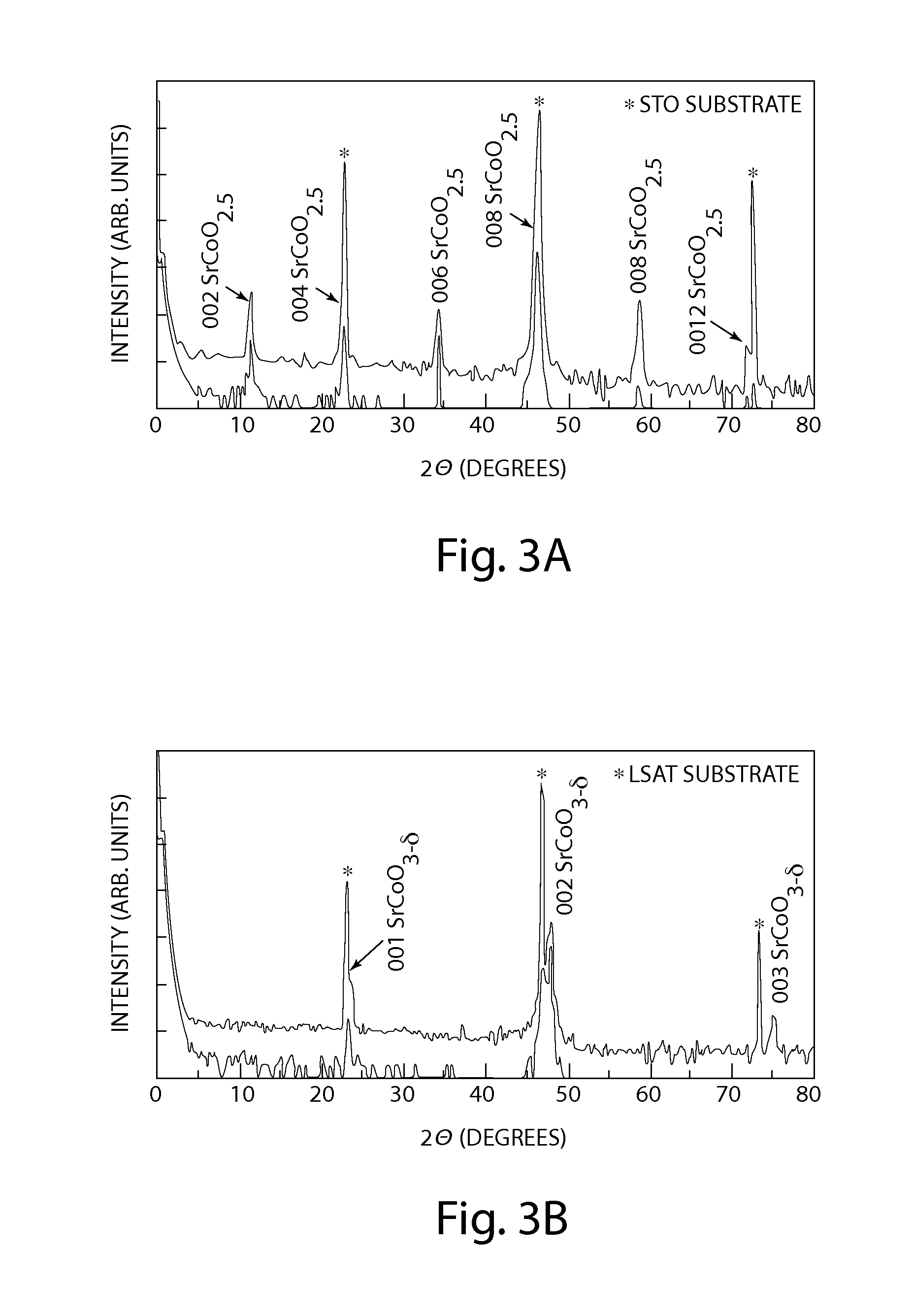Strontium cobaltite oxygen sponge catalyst and methods of use
a technology of oxygen sponge and catalyst, which is applied in the direction of physical/chemical process catalyst, metal/metal-oxide/metal-hydroxide catalyst, other chemical processes, etc., can solve the problem of material impracticality in conventional applications
- Summary
- Abstract
- Description
- Claims
- Application Information
AI Technical Summary
Benefits of technology
Problems solved by technology
Method used
Image
Examples
Embodiment Construction
[0033]A catalyst in accordance with an embodiment of the invention is shown in FIGS. 1-2 and is generally designated 10 and 20, respectively. The catalyst 10 is shown in FIG. 1 as a strontium cobaltite (SrCoO2.5) thin film in a brownmillerite phase. SrCoO2.5 is orthorhombic (ao=5.5739, bo=5.4697, and co=15.745 angstrom (Å)), which can be represented as pseudo-tetragonal (at=3.905 and ct / 4=3.9363 Å). The catalyst 20 is shown in FIG. 2 as strontium cobaltite (SrCoO3-δ) thin film in a perovskite phase. SrCoO3-δ is cubic with ac=3.8289 Å. Thin films of SrCoO2.5 and SrCoO3-δ may be grown epitaxially, for example by use of pulsed laser epitaxy on a variety of substrates. Examples of such substrates include, but are not limited to, perovskite (ABO3: where A is an alkaline or alkaline earth element, B is a transition metal and O is oxygen), SrTiO3, herein “STO” and (LaAlO3)0.3—(Sr2AlTaO6)0.7, herein “LSAT”. Thermo-mechanical degradation reduces the overall performance and lifetime of many p...
PUM
| Property | Measurement | Unit |
|---|---|---|
| temperature | aaaaa | aaaaa |
| temperature | aaaaa | aaaaa |
| temperature | aaaaa | aaaaa |
Abstract
Description
Claims
Application Information
 Login to View More
Login to View More - R&D
- Intellectual Property
- Life Sciences
- Materials
- Tech Scout
- Unparalleled Data Quality
- Higher Quality Content
- 60% Fewer Hallucinations
Browse by: Latest US Patents, China's latest patents, Technical Efficacy Thesaurus, Application Domain, Technology Topic, Popular Technical Reports.
© 2025 PatSnap. All rights reserved.Legal|Privacy policy|Modern Slavery Act Transparency Statement|Sitemap|About US| Contact US: help@patsnap.com



